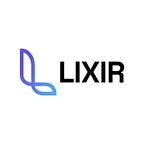On March 23rd, Uniswap, the most popular DEX in the world — as defined by trade volume, total liquidity, and revenue — announced v3 of their exchange. Uniswap v3 introduces concentrated liquidity, which gives individual liquidity providers (LPs) greater control over how their capital is allocated. This makes LPs more capital efficient, allows for low-slippage trades, let’s LPs increase exposure to preferred assets, and reduces their downside risk.
This announcement completely changes how the liquidity farming game will be played. Uniswap v3 is the first, but we expect most AMMs to quickly follow this model.
The Opportunity: Uniswap Yield Farming
Prior to v3, the high capital requirements of Uniswap meant that only low ROIs were possible there. The real money was in farming other coins with Uniswap LP tokens. Now, using concentrated liquidity, users can lower their capital used, thus drastically increasing potential ROI.
Uniswap’s new NFT pool tokens will make it possible to manage liquidity concentrations on a per-user basis, or to pool multiple users in one or more strategies.
The Problem: Active Management
Concentrated liquidity is a groundbreaking design improvement, but everything comes with tradeoffs. In order to achieve these high ROIs, users will need to actively manage their capital much more than they currently do on Uniswap.
Every time the price moves out of a concentrated liquidity range, users need to add liquidity for the more expensive side of the pair and re-price their ranges.
If users want high ROIs, they need to be extremely active and have access to capital to re-price ranges for a token.
For all but the most involved power users, the only way to get these juicy yields will be automated management. Otherwise, they’ll still have to commit large amounts of capital.
For the many projects that currently stake Uniswap LP tokens, this new system will require an adjustment period. For users who want a more hands-off or passive user experience, this new system will be confusing and stressful.
For us, it is an opportunity.
Lixir
Today, we’re thrilled to announce the first automated liquidity concentration manager for Uniswap v3: Lixir.
Lixir automates liquidity provisioning, aiming to deliver the best capital efficiency for each trading pair on our platform. Lixir will auto-rebalance your LPs’ price ranges as market prices move and reinvest fees (if you wish).
Uniswap v3’s new concentrated liquidity mechanic gives LPs the power to adjust their risk in several ways. It allows LPs to provide the same liquidity depth as v2’s within specified price ranges, which allows greater amounts of trade and more earned fees, but entails taking on more price risk, e.g., impermanent loss. For example, very narrow price ranges can provide up to 4000x capital efficiency gains (providing liquidity within a single 0.10% price range), but market prices outside of that window give nothing. Not to mention such narrow price ranges are effectively limit orders, which can be a very bad thing depending on the movement of the market price. Additionally, some LPs are more volatile than others, for example ETH-USDT is more volatile than DAI-USDC. If you aren’t familiar with the expected volatility and you don’t choose your price ranges appropriately, you will unknowingly increase your risk.
For some, the added granularity and complexity of Uniswap v3 will make this game of risk assessment and min-maxing more fun and profitable. For everyone else, there is Lixir. With Lixir you can simply choose your target returns, choose the pairs you wish to provide liquidity for, and Lixir will deploy your deposited assets appropriately, automatically rebalancing within the chosen risk profile as the market moves.
$LIX
To use the Lixir platform, you will need the project’s native token, $LIX.
$LIX is a governance token that will allow you to vote for, among other things, which pairs are offered on the Lixir platform. It’s also possible to vote changes in for $LIX staked thresholds for the various risk classes, or to introduce new risk classes. When Lixir first launches, there will be a selection of a few pre-approved pairs, for example ETH-USDC and DAI-USDC. We fully expect the community to dictate which pairs are added afterward.
A portion of the yields generated will be used to market buy $LIX, consistently adding upwards pressure to the tokens price. The purchased tokens will be distributed to our platform users who have staked $LIX tokens in our community earnings pool.
See you all in Valhalla !
